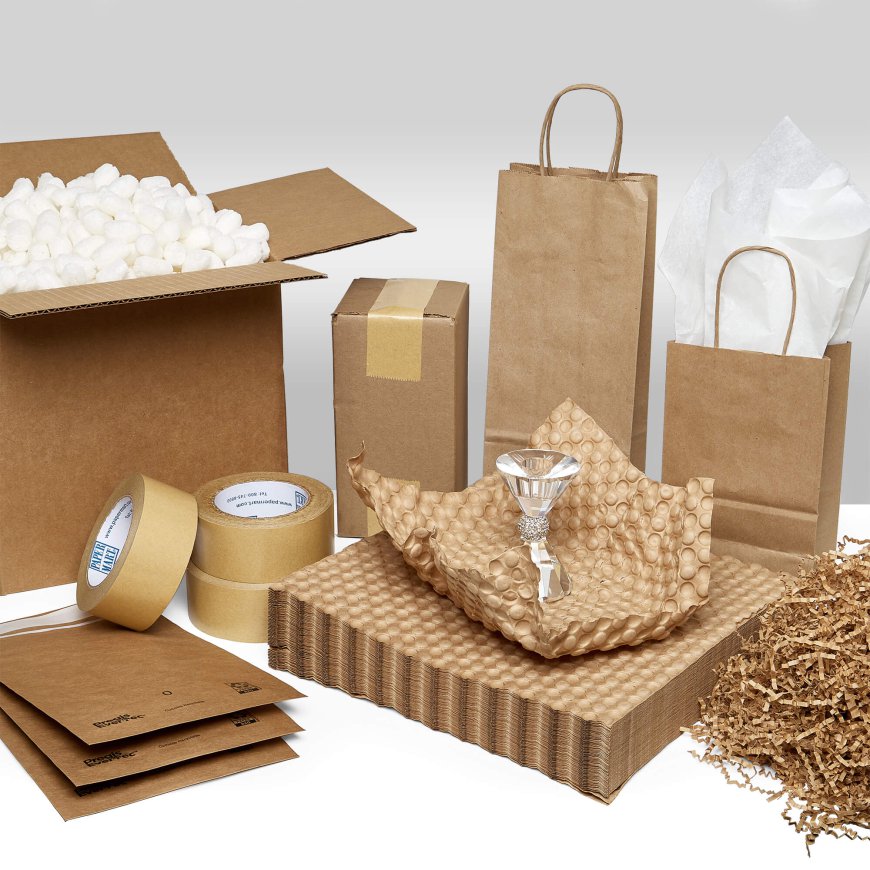Custom Packaging: The Ultimate Guide to Elevating Your Brand
Discover the power of custom packaging to elevate your brand. Learn how personalized, sustainable, and innovative packaging designs can enhance customer experience, boost brand recognition, and set your products apart in a competitive market.

In today's highly competitive market, custom packaging plays a critical role in defining a brand's identity and capturing consumer attention. This comprehensive guide will delve into the multifaceted benefits of custom packaging, explore the latest trends, and provide actionable tips to help businesses leverage custom packaging to its fullest potential.
The Importance of Custom Packaging
First Impressions Matter
Custom packaging is often the first physical interaction a customer has with a product. High-quality, thoughtfully designed packaging can leave a lasting impression, making the unboxing experience memorable. This initial interaction sets the tone for the customer's perception of the brand, influencing their buying decisions and fostering brand loyalty.
Brand Recognition and Identity
Packaging is a powerful tool for establishing and reinforcing brand identity. Through the use of logos, color schemes, and unique designs, custom packaging can effectively communicate a brand's values and personality. Consistent and distinctive packaging helps in building brand recognition, ensuring that customers can easily identify and differentiate your products from those of competitors.
Enhanced Customer Experience
Custom packaging enhances the overall customer experience by adding value beyond the product itself. Features such as eco-friendly materials, convenient design, and aesthetically pleasing visuals contribute to a positive consumer experience. Well-designed packaging can also provide important information, such as product usage instructions and brand story, which enriches the customer's connection to the brand.
Current Trends in Custom Packaging
Sustainability
Sustainable packaging is no longer just a trend but a necessity. Consumers are increasingly eco-conscious and expect brands to adopt environmentally friendly practices. Utilizing recyclable, biodegradable, or reusable materials not only reduces the environmental footprint but also appeals to the modern consumer’s values. Brands that prioritize sustainability in their packaging can enhance their reputation and appeal to a broader audience.
Minimalistic Design
Minimalistic design focuses on simplicity and functionality. Clean lines, simple graphics, and a limited color palette are hallmarks of this trend. Minimalistic packaging is not only visually appealing but also reduces waste and cost, making it an attractive option for both businesses and consumers.
Personalization
Personalized packaging creates a unique and special experience for the customer. Techniques such as custom messages, names, or exclusive designs can make the customer feel valued and appreciated. Personalization can be particularly effective for special occasions, promotions, or limited-edition products.
Smart Packaging
Technological advancements have paved the way for smart packaging, which incorporates QR codes, NFC chips, and other digital elements. These innovations enable interactive and immersive experiences, providing customers with additional information, augmented reality (AR) experiences, and easy reordering options.
Benefits of Custom Packaging for Businesses
Differentiation from Competitors
Custom packaging sets your product apart in a crowded market. Unique and eye-catching designs can capture consumer attention and make your product stand out on retail shelves. This differentiation is crucial in highly competitive industries where brand loyalty can be fleeting.
Protection and Preservation
Beyond aesthetics, custom packaging provides practical benefits such as product protection and preservation. Tailored packaging ensures that products are safeguarded during transit, reducing the risk of damage and returns. For perishable goods, packaging solutions that maintain freshness and extend shelf life are essential.
Marketing and Promotion
Packaging serves as a marketing tool that can influence purchasing decisions. Attractive packaging can entice customers to choose your product over others. Additionally, packaging can be used to promote special offers, new products, or upcoming events, providing a cost-effective way to reach your target audience.
Customer Loyalty and Retention
Investing in high-quality custom packaging demonstrates a commitment to excellence, which resonates with customers. A positive unboxing experience can leave a lasting impression, encouraging repeat purchases and fostering customer loyalty. Engaged and satisfied customers are more likely to become brand advocates, spreading positive word-of-mouth and boosting your brand’s reputation.
How to Create Effective Custom Packaging
Understand Your Audience
To create effective custom packaging, it is essential to understand your target audience. Consider their preferences, values, and expectations. Tailoring your packaging to meet these needs can significantly enhance its impact and effectiveness.
Focus on Design Elements
Design elements such as color, typography, and imagery play a critical role in custom packaging. Ensure that these elements align with your brand’s identity and message. Use high-quality graphics and materials to convey professionalism and attention to detail.
Incorporate Brand Elements
Consistent use of brand elements such as logos, slogans, and color schemes reinforces brand recognition. Ensure that your packaging design is cohesive with other marketing materials to create a unified brand experience.
Prioritize Functionality
While aesthetics are important, functionality should not be overlooked. Packaging should be easy to open, store, and dispose of. Consider the practical aspects such as size, shape, and material to ensure that your packaging is user-friendly.
Choose the Right Materials
Selecting the appropriate materials is crucial for both presentation and protection. Consider the nature of your product and choose materials that provide adequate protection while aligning with your brand values. For example, eco-friendly materials are ideal for brands that emphasize sustainability.
Test and Iterate
Before finalizing your packaging design, conduct thorough testing to ensure it meets all requirements. Gather feedback from customers and stakeholders to identify any areas for improvement. Iterative testing allows you to refine your packaging until it achieves the desired impact.
Conclusion
Custom packaging is a vital aspect of branding and marketing that can significantly influence consumer perception and behavior. By focusing on design, sustainability, and functionality, businesses can create packaging that not only protects the product but also enhances the customer experience and reinforces brand identity. In a competitive market, effective custom packaging can be the differentiator that sets your brand apart and drives success.

 robert312
robert312